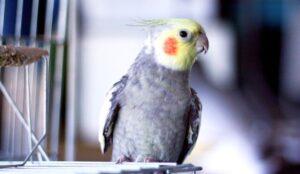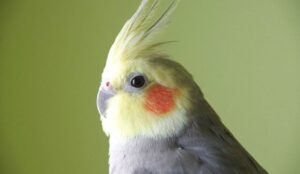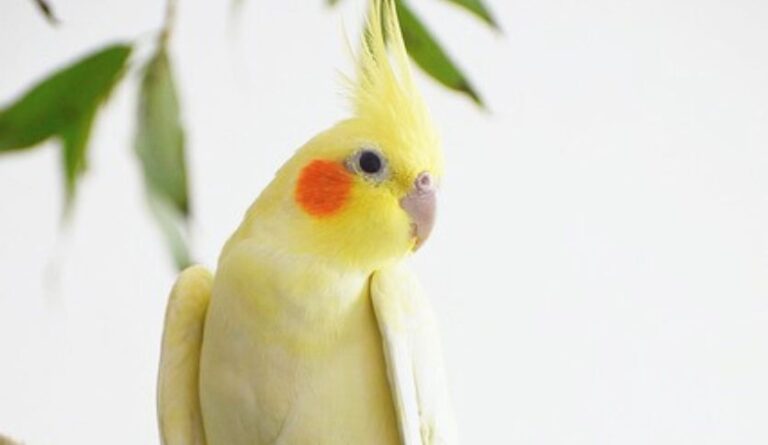Hello, fellow bird enthusiasts! Today, we’re diving into a topic close to the heart of every cockatiel owner. These charming creatures, known for their distinctive crest and playful personalities, are more than just pets; they are a window into the fascinating world of avian behavior and care. In this article, we delve into a critical aspect of cockatiel care, particularly for those aspiring to breed these birds – the importance of selecting the optimal cage size.
Understanding Cockatiels
Cockatiels, native to the arid regions of Australia, are cherished for their captivating crest and lively personalities. These birds have adapted to a wide range of environments, but in captivity, their well-being largely depends on their surroundings. The space in which they live plays a crucial role in their overall health and happiness. A cockatiel’s cage is not just a habitat; it’s a critical part of their ecosystem that needs to mimic their natural environment as closely as possible.
The Basics of Breeding Cockatiels
Breeding cockatiels isn’t just about pairing a male and female. It’s about creating an environment that supports their natural breeding behaviors. This includes ensuring the right blend of light, which affects their breeding cycles, appropriate temperature to mimic their natural habitat, and a balanced diet to ensure they have all the nutrients needed for breeding. The environment, especially the cage, plays a pivotal role in the health of the eggs and the chicks that will eventually hatch.
Determining the Ideal Cage Size

Size matters when it comes to breeding cages. The minimum recommended size is 24 x 24 x 24 inches, but if you have the space, go bigger. This isn’t just about comfort; it’s about providing enough room for the birds to exhibit natural behaviors. Breeding cockatiels need space to move, stretch, and fly short distances. They also need room for a nesting area, which is critical for the hen to lay and incubate her eggs safely. Adequate space helps reduce stress, a key factor in successful breeding.
Cage Setup for Breeding
When it comes to setting up a breeding cage for cockatiels, think of it as creating a small-scale version of their natural habitat. This setup is not just about aesthetics; it’s crucial for the health, safety, and psychological well-being of these birds, especially during the sensitive breeding period. Let’s break down the key elements of an ideal breeding cage setup:
1. The Nesting Box: A Sanctuary for Breeding
- Placement and Size: Position the nesting box in a quiet corner of the cage to provide a sense of security. The size should be large enough to comfortably accommodate the breeding pair and their future chicks, but not so large that it overwhelms the cage space.
- Material: Use natural, untreated wood for the nesting box. Avoid treated woods or those with strong odors, as they can be toxic to cockatiels.
- Accessibility: Ensure the box has an easy entrance and exit, but also include a lid or a way to access the box from outside for monitoring and cleaning purposes.
2. Perches at Different Levels: Simulating Natural Environments
- Variety: Install perches of various diameters and textures. This variety helps keep the cockatiels’ feet healthy and mimics the different sizes of branches they would encounter in the wild.
- Placement: Arrange the perches at different heights and distances, but avoid placing them directly over food or water dishes to prevent contamination.
3. Separate Feeding Stations: Reducing Competition
- Multiple Stations: Include more than one feeding station to prevent food aggression and territorial behavior, which can be heightened during breeding.
- Location: Space the feeding stations strategically to allow both birds equal and stress-free access.
4. Choosing Safe Materials: Ensuring Health and Safety
- Avoid Toxic Substances: Be aware of the materials used in the cage construction. Zinc and lead, often found in paints and metal finishes, can be toxic. Opt for powder-coated or stainless steel cages.
- Non-Toxic Toys and Accessories: Ensure any toys or additional accessories are made from bird-safe materials. Avoid plastic toys that can be easily chewed into small, ingestible pieces.
5. Additional Accessories: Enhancing the Breeding Environment
- Bathing Area: Consider including a shallow water dish for bathing, as regular baths are essential for maintaining feather health.
- Chewable Items: Provide materials like cuttlebones or wooden blocks for chewing, which is a natural and necessary activity for cockatiels.
6. Safety and Security: Essential for Breeding Success
- Secure Doors and Latches: Ensure the cage is secure to prevent escapes or accidents, especially when not under direct supervision.
- Cover for Nighttime: Offering a cover for the cage during the night can provide a sense of security and help maintain a regular light-dark cycle, important for breeding birds.
Additional Considerations
Hygiene is paramount in a breeding cage. Diseases can spread quickly in a dirty environment, so regular cleaning is a must. Equally important is balancing the need for social interaction with privacy. Birds that feel constantly observed or disturbed can become stressed, which can adversely affect their breeding behavior and overall health.
Common Mistakes to Avoid

When it comes to breeding cockatiels, success hinges on more than just good intentions. There are several common pitfalls that can undermine the health and happiness of these birds, and by extension, their breeding success. Being aware of these mistakes is key to creating a thriving breeding environment.
1. Underestimating the Importance of Cage Size
- The Issue with Small Cages: A cramped cage doesn’t just limit physical movement; it can lead to psychological stress, increased aggression, and health problems. These issues can manifest as feather plucking, incessant squawking, or even physical aggression between the birds.
- Space for Activities: Breeding cockatiels need space not just for themselves, but also for nesting, feeding, and engaging in natural behaviors. A cage that’s too small can disrupt these essential activities, leading to frustration and stress.
2. Overlooking the Need for Environmental Enrichment
- Boredom and Stress: A barren cage, devoid of toys, perches, and other forms of enrichment, can lead to boredom, which in turn can cause stress and self-destructive behaviors.
- Enrichment is Key: Regularly rotating toys, providing foraging opportunities, and introducing new elements can keep the environment stimulating and engaging for the birds.
3. Ignoring Signs of Distress or Discomfort
- Early Warning Signs: Changes in behavior, such as reduced singing, changes in eating habits, or feather damage, can be early indicators of stress or illness.
- Prompt Action is Crucial: Addressing these signs early on can prevent more serious health issues and improve the chances of successful breeding.
4. Neglecting Cage Maintenance and Hygiene
- Health Hazards: A dirty cage can lead to a buildup of bacteria and parasites, which can be detrimental to the birds’ health.
- Regular Cleaning: Consistent cleaning of the cage, food and water dishes, and changing of bedding material is essential to maintain a healthy environment.
5. Inadequate Nutrition
- Impact on Breeding: Poor nutrition can lead to health problems in both adult birds and their offspring. It can affect egg quality, chick development, and the overall health of the breeding pair.
- Balanced Diet: Providing a diet that includes a variety of seeds, pellets, fruits, and vegetables is crucial for the well-being of breeding cockatiels.
6. Mismanaging Light and Temperature
- Disrupted Breeding Cycles: Inappropriate lighting and temperature can disrupt the natural breeding cycles of cockatiels.
- Mimicking Natural Conditions: Ensuring the cage is located in a place with natural light cycles and maintained at a comfortable temperature is important for mimicking their natural breeding environment.
FAQs
Q: Where to Put a Bird Cage in the House?
The best place for a bird cage in the house is a quiet yet social area with natural light, like a living room or family room. Ensure it’s away from direct sunlight, drafts, and extreme temperatures. Avoid placing the cage in isolated areas, kitchens, and garages to protect from harmful fumes and ensure your bird is part of family activities for social stimulation. Safety is key, so keep the cage out of reach of other pets and small children.
Q: How often should I clean the breeding cage?
Regular cleaning, at least once a week, is essential. However, spot cleaning should be done daily to maintain a healthy environment.
Q: Can cockatiels breed in a communal aviary?
While possible, breeding in a communal aviary can be challenging. Territorial disputes and stress can arise, which might impede successful breeding.
Conclusion
In summary, choose the best cage for cockatiel and setup are fundamental for healthy cockatiel breeding. It’s not just about providing a space for your birds; it’s about creating an environment where they can thrive and exhibit natural behaviors.

Hi, I’m Regina Rios. Just another bird lover who loves to share knowledge from personal experience. I’ve grown up with pet birds since childhood as my mommy also loves birds. As I can’t pet many birds in open air in my house as my mom does; I created my first bird cage on my rooftop using wood, copper wire, and a metal shed in 2018 and start collecting pet birds. Now, I have so many pet birds such as Macaws, Parrot, Cockatiel, Parakeet, and others. Not only that, if I see natural birds are injured I keep them in my house until they get well. Now, my hobby becomes my income source as my home birds have babies and I sell them to birds lover like mine. I’ve created this blog to inspire others bird owners by sharing my personal knowledge. Good Luck!


